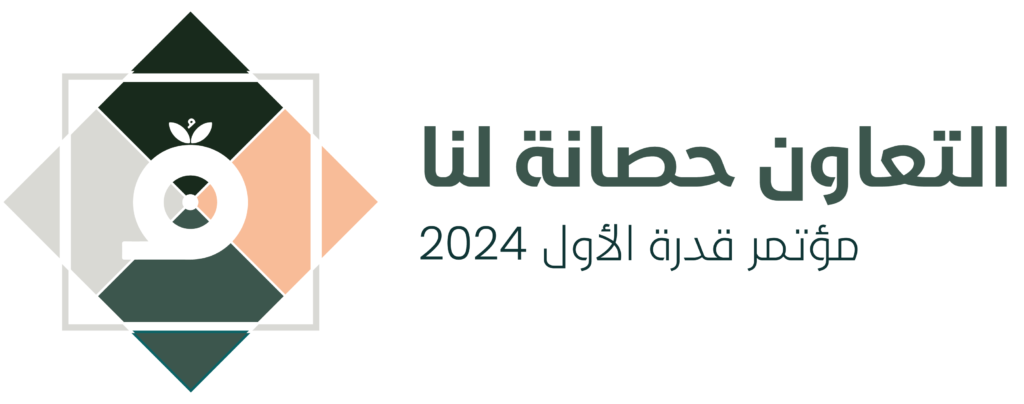
1. Philanthropy in the Modern Era
Donations, organized giving, and philanthropy are vital parts of modern societies, helping address social and economic issues to support those most in need. In recent years, philanthropy has become more complex and strategic, evolving from traditional donations to strategic investments aimed at achieving sustainable impact through coordinated efforts and partnerships between the public and private sectors, as well as NGOs.
According to the 2023 Global Philanthropy Report, charitable donations amounted to $841 billion in 2020. This large volume of donations demonstrates the contribution of philanthropy in achieving a positive impact across various fields of economic and social development.
In the past, philanthropy was primarily focused on individual donations and immediate humanitarian aid. Today, this field has transformed into a more strategic approach, involving careful planning, goal setting, and resource investment to achieve long-term, sustainable results.
2. The Role of Collaboration in Enhancing Social Impact
Collaboration in philanthropy refers to the combined efforts of institutions to achieve common goals in the areas of social and organized giving. The need for collaboration in philanthropy has become more pressing in light of the growing challenges facing communities worldwide. Effective collaboration allows for knowledge, resources, and experiences to be exchanged, enhancing the effectiveness of programs and ensuring their sustainability.
According to a study by Philanthropy Roundtable, strategic partnerships between institutions improve program performance by up to 50%, enabling charitable organizations to increase their impact and expand the reach of available expertise to develop more efficient projects addressing societal challenges.
For example, partnerships can provide financial resources and technical expertise, while NGOs bring local knowledge and field experience. By integrating these diverse capabilities, comprehensive and sustainable solutions can be achieved, hence meeting the needs of communities more effectively.
At Qudra, we always strive to connect Arab donors with local and international civil society organizations to support development projects in areas such as education, employment, food security, and health. By creating an integrated ecosystem for collaboration, we contribute to maximizing the collective impact of giving.
3. Components of Strategic Partnerships in Philanthropy
Strategic partnerships are a cornerstone of modern philanthropy, significantly contributing to the achievement of shared societal goals. The effectiveness of these partnerships lies in the integration of several key elements:
- Collaborative Giving
Collaborative giving is a primary pillar of strategic partnerships. By pooling financial resources, larger and more impactful projects can be supported and funded. A notable example is the *Matching Grants*, where donations made by donors to selected civil society organizations are matched by supporters, increasing the financial and social impact.
- Joint Strategic Planning
Coordinated strategic planning is essential for the success of any partnership. Charitable organizations and companies must work together to develop a clear, aligned plan that includes setting shared goals, methods for achieving them, and mechanisms for measuring success.
- Donation Programs
Donation programs are a form of cooperation between companies, foundations, and organizations, where companies contribute a portion of their profits or products to support charitable projects in communities. This creates a tangible interaction between business and social responsibility.
- Use of Technology
Technology plays a pivotal role in facilitating collaboration between partners and enhancing the effectiveness of partnerships. It also helps manage donor relationships, track the social impact of projects, and analyze data effectively, contributing to performance improvement and community impact.
4. How Do Partnerships Enhance Social Impact?
Strategic partnerships are one of the most important tools that increase the effectiveness of philanthropy and deepen its impact on communities. Through these partnerships, civil society organizations, companies, and official and governmental institutions collaborate to achieve shared goals, leading to greater and more sustainable results. The main impact of partnerships lies in their ability to pool financial and human resources from various parties, in addition to exchanging experiences and knowledge, which helps multiply social impact.
Partnerships allow for a balanced distribution of roles and responsibilities among partners, where each party contributes in areas in which they excel. For example, a company might provide the necessary funding for a charitable project, while an NGO takes charge of program implementation with its field expertise. Meanwhile, official institutions, whether governmental or local, provide legal facilities or infrastructure. This integration between parties makes partnerships a powerful and effective tool for providing comprehensive and sustainable solutions, enhancing the impact of philanthropy and making it more enduring.
5. Challenges Facing Philanthropic Partnerships
Despite the importance of collaboration in philanthropy, there are key challenges that must be overcome to ensure the success of partnerships. Among the most prominent challenges are:
- Diverging Goals
Sometimes, the goals of charitable organizations and companies may not align perfectly, leading to conflicts in priorities. To overcome this challenge, partners should establish common goals from the outset, with clear roles and responsibilities for each party.
- Lack of Trust
Trust is a fundamental element in the success of any partnership. In the early stages of collaboration, it can be challenging to build trust between different parties, especially if they come from diverse backgrounds and cultures. To overcome this challenge, complete transparency must prevail among partners at all stages of collaboration, fostering trust and building a solid partnership.
- Unstable Funding
Unstable funding is one of the major challenges facing joint charitable projects. Often, fluctuations in the global or local economy can lead to reduced available funds, making it necessary to develop sustainable funding models capable of continuing even in tough economic conditions.
At Qudra, we strive to be a center point that brings donors and partners together to achieve clear developmental goals. Through our various platforms and focus on innovation and collaboration, we work to build an ecosystem that can effectively address challenges and achieve tangible results in the field.
In this context, Qudra’s upcoming annual conference represents an opportunity to share successful experiences and learn about the latest trends in philanthropy. Through partnerships and cooperation, we can all enhance the positive and sustainable impact in our communities.
6. Tools and Methods to Strengthen Philanthropic Collaboration
- Joint Planning Tools
One of the key tools that can enhance strategic partnerships is the *SWOT Analysis*, which enables partners to identify strengths and weaknesses within each organization and assess external opportunities and threats. Through *SWOT Analysis*, charitable entities and partners can evaluate common opportunities and challenges that may hinder achieving goals, contributing to more efficient and effective joint plans.
- Shared Funding and Collaborative Giving
The model of shared funding and support, such as *Matching Grants*, is a successful example of enhancing charitable partnerships. For instance, if a company or funding agency donates an amount to support a charitable project, it can double this amount by encouraging other entities to make similar donations. This model encourages both individuals and institutions to donate, knowing their contributions will have a greater impact.
- Technology and Innovation
Technological innovation has become one of the primary drivers of change and development across various fields, including philanthropy and community development. With rapid technological advances, technology has become a powerful tool to enhance innovation in providing solutions to societal challenges, enabling NGOs and civil society organizations to improve
7. Toward a More Collaborative Future in Philanthropy and Organized Giving
With the growing need for innovative solutions to address social and economic issues in today’s world, philanthropy must adopt strategic partnerships as a key tool for achieving meaningful and sustainable impact. Charitable organizations can no longer rely solely on donations or individual efforts; rather, they must seek to strengthen collaboration with different sectors, including public institutions, private companies, and civil society organizations, to achieve broader and more comprehensive results.
- Shifting Towards Integrated Strategic Partnerships
Strategic partnerships require utilizing all available resources in an organized and coordinated manner. For example, partnerships can offer financial resources and technical expertise, while organizations contribute local knowledge and field experience. By combining these diverse capabilities, it becomes possible to achieve comprehensive and sustainable solutions.
- Enhancing Transparency and Accountability
Transparency is a fundamental pillar of any successful partnership. When processes are clear and all partners are aware of how resources are utilized and distributed, trust between the parties is strengthened, and collaboration becomes more effective. Tools such as data analysis and donation tracking technologies can be used to improve project monitoring and ensure that goals are achieved efficiently and effectively.
- Innovation and Technology
Technological innovation plays a key role in facilitating collaboration and developing new methods to achieve goals. For instance, digital platforms can be used to track donations and increase transparency. Additionally, AI tools can analyze data and provide comprehensive reports on the social impact of projects, contributing to decision-making and directing resources to areas of greatest need.
- Guiding Efforts Towards Sustainable Development
Social impact is not limited to providing aid or financial support; it requires long-term strategic planning to ensure project sustainability. Charitable organizations must focus on addressing core issues that affect community development, such as education, health, and equality. Building strong partnerships across various sectors is essential to achieving lasting change that benefits future generations.

